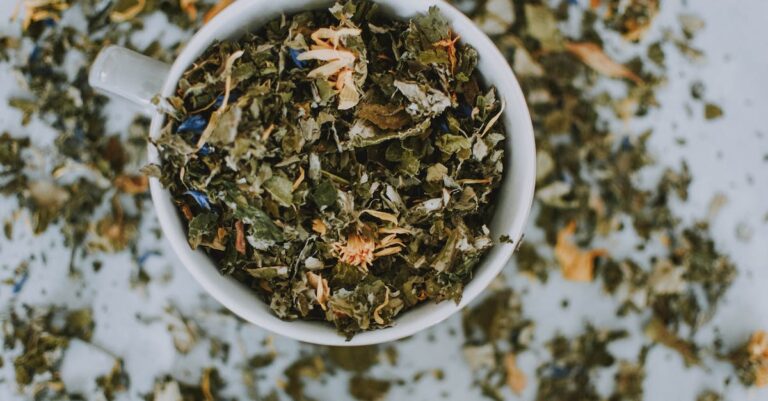Introduction
What are antibiotics?
Antibiotics are powerful medications that are used to treat bacterial infections. They work by killing or inhibiting the growth of bacteria, helping the body’s immune system to fight off the infection. Antibiotics are commonly prescribed by healthcare professionals and are available in various forms such as pills, injections, and creams. It is important to take antibiotics as prescribed and to complete the full course of treatment, even if symptoms improve. Some common types of antibiotics include penicillin, erythromycin, and tetracycline.
The problem of antibiotic resistance
Antibiotic resistance is a growing problem in today’s world. With the overuse and misuse of antibiotics, bacteria are evolving and becoming resistant to these life-saving drugs. This poses a serious threat to public health as it limits the effectiveness of our current antibiotics. The rise of antibiotic-resistant infections has led to longer hospital stays, increased healthcare costs, and even death. It is crucial that we find alternative solutions to combat this problem. One potential solution is the use of spices as antibiotics. Spices such as garlic, turmeric, and cinnamon have shown promising antimicrobial properties and may help in the fight against antibiotic resistance. Research is ongoing to explore the potential of these natural alternatives and their effectiveness in treating bacterial infections. By utilizing spices as antibiotics, we can reduce our reliance on traditional antibiotics and potentially slow down the development of antibiotic resistance.
Exploring alternative sources of antibiotics
Vitamin D and C supplements have gained popularity as alternative sources of antibiotics. These supplements are believed to boost the immune system and help fight off infections. Vitamin D is known for its role in promoting bone health and reducing the risk of respiratory infections. It also plays a crucial role in modulating the immune response. Vitamin C, on the other hand, is a powerful antioxidant that helps protect cells from damage and supports immune function. Both vitamin D and C supplements can be easily incorporated into one’s daily routine to support overall health and potentially provide antibiotic-like benefits.
Spices with Antibiotic Properties

Garlic
Garlic is a widely used ingredient in various culinary dishes and also known for its medicinal properties. It has been used for centuries as a natural remedy for various health conditions. Garlic is part of the Allium family and contains a compound called allicin, which is responsible for its distinct aroma and potential health benefits. This herb is believed to have antibacterial and antiviral properties, making it a popular choice in herbal remedies. Studies have shown that garlic may help boost the immune system, reduce the risk of certain cancers, and lower blood pressure. Additionally, it is often used as a natural antibiotic due to its potential to fight against bacteria and other pathogens. Incorporating garlic into your diet or using garlic supplements may provide various health benefits and support overall well-being.
Turmeric
Turmeric is a spice that has been used for centuries in traditional medicine. It is known for its vibrant yellow color and distinctive flavor. But did you know that turmeric also has antibiotic properties? Studies have shown that turmeric contains a compound called curcumin, which has been found to have antibacterial, antiviral, and antifungal effects. This makes turmeric a natural antibiotic that can help fight off infections. So, if you’re looking for a natural way to boost your immune system and protect yourself against harmful bacteria, turmeric is definitely worth considering.
Ginger
Ginger, also known as Zingiber officinale, is a flowering plant that belongs to the family Zingiberaceae. It is widely used as a spice in various cuisines around the world. Ginger has a strong, pungent flavor and a warm, aromatic scent. It contains several bioactive compounds, including gingerol, which is known for its antioxidant and anti-inflammatory properties. Studies have shown that ginger may have potential antibiotic properties, although more research is needed to fully understand its effectiveness. In traditional medicine, ginger has been used to treat various ailments, including digestive issues, nausea, and respiratory infections. Incorporating ginger into your diet can be a flavorful way to add a natural spice with potential health benefits.
Mechanism of Action
How do spices act as antibiotics?
Spices have long been used for their medicinal properties, and recent research has shown that some spices have antibiotic effects. But how do spices actually act as antibiotics? When ingested, certain compounds present in spices can inhibit the growth of bacteria by disrupting their cell walls or interfering with their metabolic processes. This antibacterial activity is attributed to the presence of bioactive compounds such as curcumin in turmeric, allicin in garlic, and eugenol in cloves. These compounds have been found to exhibit antimicrobial properties, making spices a natural and effective alternative to traditional antibiotics. By incorporating spices into our diet, we can harness their antibacterial properties and support our immune system in fighting off harmful bacteria.
Inhibition of bacterial growth
Inhibition of bacterial growth is a crucial aspect in the fight against infections. Bacteria in the body can cause various illnesses and diseases. Therefore, it is important to find effective ways to prevent their growth and spread. One approach to inhibiting bacterial growth is through the use of antibiotics. Antibiotics are substances that can kill or inhibit the growth of bacteria. They work by targeting specific components or processes within the bacterial cells, disrupting their normal functioning. By inhibiting bacterial growth, antibiotics help to control and eliminate bacterial infections. However, it is important to use antibiotics judiciously to avoid the development of antibiotic resistance. Antibiotic resistance occurs when bacteria adapt and become resistant to the effects of antibiotics, rendering them ineffective. In conclusion, the inhibition of bacterial growth plays a crucial role in maintaining a healthy body and preventing the spread of infectious diseases.
Interference with bacterial cell processes
Spices have been used for centuries not only for their flavor but also for their medicinal properties. In recent years, there has been growing interest in the potential of spices as natural antibiotics. One particular spice that has gained attention is Xanax. Xanax is known for its calming effects and is commonly used to treat anxiety disorders. However, research has shown that Xanax also possesses antibacterial properties. It can interfere with bacterial cell processes, inhibiting their growth and replication. This makes Xanax a promising candidate for the development of new antibiotics. Understanding the mechanisms by which Xanax exerts its antibacterial effects can lead to the discovery of novel therapeutic approaches to combat bacterial infections.
Effectiveness of Spice Antibiotics

Research studies on spice antibiotics
Research studies have shown that certain spices possess antibiotic properties, making them effective natural remedies. These spices have been found to inhibit the growth of harmful bacteria and even kill them. Natural remedies, such as spices, offer a promising alternative to traditional antibiotics, as they may have fewer side effects and are generally more accessible. Incorporating these spice antibiotics into our diets and daily routines may help support our immune system and promote overall health.
Comparison with conventional antibiotics
Spices have been used for centuries in traditional medicine for their potential health benefits. One spice that has gained attention for its antibiotic properties is ginger. Ginger contains a compound called gingerol, which has been found to have antimicrobial effects against a wide range of bacteria. Studies have shown that ginger can inhibit the growth of harmful bacteria and even help to prevent the development of antibiotic resistance. Another important aspect to consider is ginger’s impact on kidney health. Research suggests that ginger may have protective effects on the kidneys, helping to reduce the risk of kidney damage and improve overall kidney function. Overall, ginger shows promise as a natural alternative to conventional antibiotics, with potential benefits for both fighting infections and supporting kidney health.
Limitations and challenges
There are several limitations and challenges associated with the use of spices as antibiotics. Firstly, the effectiveness of spices in treating bacterial infections may vary depending on the type and strain of bacteria. Some bacteria may be more resistant to the antimicrobial properties of spices, making them less effective in combating infections. Additionally, the concentration and quality of active compounds in spices can vary, which can impact their ability to inhibit bacterial growth. Another challenge is the lack of standardized dosage and treatment guidelines for using spices as antibiotics. Unlike conventional antibiotics, there is limited research and clinical data available on the optimal dosage and duration of spice-based treatments. Furthermore, the potential for adverse reactions and interactions with other medications is not well understood. Therefore, caution should be exercised when using spices as antibiotics, and it is recommended to consult with a healthcare professional before incorporating them into a treatment plan.
Application and Future Potential
Spice antibiotics in food preservation
Spice antibiotics in food preservation have gained significant attention in recent years. As consumers become more conscious about the potential health risks associated with synthetic antibiotics, they are turning to natural alternatives. One of the most promising natural alternatives is the use of spices. Spices not only add flavor to food but also possess antimicrobial properties that can help preserve food and inhibit the growth of harmful bacteria. Among the various spices, there is one that stands out for its exceptional antibiotic properties – the best leaf for eyesight. This leaf has been used for centuries in traditional medicine for its ability to improve eyesight. Studies have shown that the best leaf for eyesight contains compounds that can effectively fight against bacteria and other microorganisms. Incorporating this spice into food preservation techniques can not only enhance the taste of the food but also extend its shelf life. It is no wonder that the best leaf for eyesight is becoming increasingly popular as a natural antibiotic in food preservation.
Potential use in medicine
Edible herbs have long been used in traditional medicine for their potential medicinal properties. These natural remedies have gained attention for their ability to fight off infections and promote overall health. One such herb with potential antibiotic properties is turmeric. Turmeric contains a compound called curcumin, which has been found to have antimicrobial effects against various bacteria and fungi. Another herb with potential antibiotic properties is garlic. Garlic has been used for centuries to treat infections due to its antimicrobial and immune-boosting properties. Additionally, oregano, thyme, and cinnamon are also known for their potential antimicrobial properties. These edible herbs have shown promise in the field of medicine and may offer alternative treatment options for various ailments.
Exploring new spice antibiotics
Spices have long been used for their medicinal properties, and now researchers are exploring the potential of spices as antibiotics. In recent studies, scientists have found that certain spices possess antimicrobial properties that can help fight against bacteria and other pathogens. One such spice that has shown promise is turmeric, which contains a compound called curcumin. Curcumin has been found to have antibacterial, antiviral, and antifungal effects, making it a potential candidate for the development of new antibiotics. Another spice that has been studied for its antibiotic properties is cinnamon, which contains a compound called cinnamaldehyde. Cinnamaldehyde has been found to inhibit the growth of bacteria and may have potential applications in the treatment of infections. These findings suggest that spices could be a valuable source of new antibiotics, providing alternative options for combating antibiotic-resistant bacteria.
FAQ (Frequently Asked Questions)

Are spice antibiotics safe?
Spice antibiotics have gained popularity in recent years due to their potential health benefits. However, the safety of using spice antibiotics is a topic of concern. While some studies suggest that certain spices possess antibacterial properties, it is important to note that these effects may vary depending on the spice and the specific bacteria being targeted. Additionally, the concentration and dosage of spice antibiotics may play a significant role in their safety and efficacy. It is recommended to consult with a healthcare professional before incorporating spice antibiotics into your health routine. Bold keywords: spice antibiotics, health benefits, safety, antibacterial properties, concentration, dosage, healthcare professional
Can spice antibiotics replace conventional antibiotics?
Spice antibiotics have gained attention in recent years as a potential alternative to conventional antibiotics. Can spice antibiotics replace conventional antibiotics? This question has sparked a lot of interest and debate among researchers and health professionals. One of the key areas of focus is their effectiveness in treating hot flashes. Hot flashes are a common symptom experienced by many individuals, particularly women going through menopause. Studies have shown that certain spices, such as turmeric and cinnamon, may have antibacterial properties that can help alleviate hot flashes. However, more research is needed to fully understand the potential of spice antibiotics in treating this condition. Despite the promising findings, it is important to note that spice antibiotics should not be seen as a complete replacement for conventional antibiotics. They may have a role to play in certain cases, but the use of conventional antibiotics should still be prioritized for serious infections and conditions.
How can I incorporate spice antibiotics into my diet?
Spice antibiotics can be easily incorporated into your diet to boost your immune system and promote overall health. By adding spices like turmeric, garlic, and ginger to your meals, you can take advantage of their natural antibiotic properties. These spices contain compounds that have been found to have antimicrobial effects, helping to fight off harmful bacteria and viruses. Additionally, spice antibiotics can enhance the flavor of your dishes, making them both delicious and beneficial for your health. So, next time you cook, consider adding a pinch of spice antibiotics to give your meals an extra health boost.















































